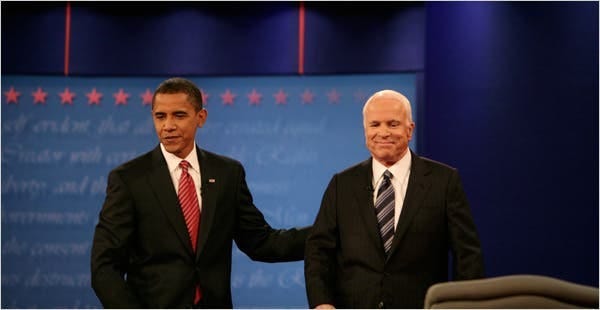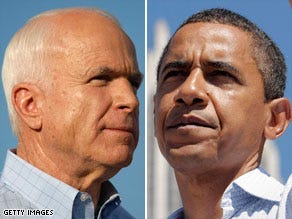A Journey from Hope to Division
The Legacy of Obama’s Presidency and Its Aftermath
Phoenix, Arizona, November 4, 2008: “My friends, we have — we have come to the end of a long journey. The American people have spoken, and they have spoken clearly.” With these words, Senator John McCain conceded the 2008 presidential election to Senator Barack Obama, acknowledging a historic moment for the United States. McCain’s concession speech, marked by grace and respect, highlighted the significance of Obama’s victory, particularly for African-Americans, and set a tone of unity and opportunity.
The Historic Presidency of Barack Obama
The election of Barack Obama as the first Black President of the United States was a milestone that promised hope and change. His victory was a testament to America’s progress in overcoming racial barriers, as McCain eloquently noted in his concession speech.
Obama inspired millions, particularly those who had previously felt disenfranchised, to believe in the power of their vote and the possibility of change.
The Progressive Agenda and Its Impact
1. Healthcare Reform:
Affordable Care Act (ACA): One of Obama’s most significant achievements was the passage of the ACA, which expanded healthcare coverage to millions of Americans. While it aimed to provide essential services and reduce healthcare costs, it also faced intense opposition from conservatives who viewed it as an overreach of government power.
2. Financial Regulations:
Dodd-Frank Act: In response to the 2008 financial crisis, Obama enacted regulations to increase oversight of the financial industry. These measures aimed to prevent future economic disasters but were seen by many on the right as stifling business innovation and growth.
3. Social Issues:
LGBTQ+ Rights and Environmental Policies: Obama’s support for LGBTQ+ rights, including the repeal of “Don’t Ask, Don’t Tell” and the endorsement of same-sex marriage, alongside aggressive environmental policies, further polarized opinions. Many conservatives felt these measures conflicted with traditional values and economic priorities.
These progressive initiatives, while transformative and aimed at social and economic reform, were perceived by many conservatives as too radical. This perception contributed to the rise of the Tea Party movement and a significant ideological shift to the right within the Republican Party.
The Right’s Reaction: Resistance to a Black President
1. Racial Dynamics:
Symbolism and Reality: Obama’s presidency symbolized racial progress but also highlighted persistent racial tensions within the country. For some, the election of a Black president represented a threat to the traditional social order, exacerbating racial anxieties.
2. Partisan Media:
Echo Chambers: Conservative media outlets amplified these anxieties, creating echo chambers that fueled distrust and opposition. This media landscape contributed to the spread of misinformation and polarized narratives, now a hallmark of today’s political discourse.
3. Political Obstruction:
Congressional Gridlock: Reflecting the sentiments of its base, the Republican Party frequently opposed Obama’s initiatives. This resistance was not only policy-based but also a reaction to Obama’s identity and the symbolic changes his presidency represented.
The Consequences: A Path to Today’s Divisions
1. Electoral Shifts:
Midterm Losses: The 2010 midterm elections saw a significant Republican victory, resulting in a divided government and legislative gridlock. This set a precedent for future administrations, contributing to the increasing difficulty in passing bipartisan legislation.
2. Rise of Extremism:
From Tea Party to Trump: The ideological shift within the Republican Party, initiated by the Tea Party movement, created fertile ground for the rise of more extreme political figures, culminating in the election of Donald Trump. Trump’s presidency further polarized the nation, embedding deep-seated divisions that continue to resonate.
3. Erosion of Norms:
Civic Discourse: The growing polarization has eroded traditional norms of civic discourse and bipartisan cooperation, leading to a more fragmented political landscape where compromise is increasingly rare and ideological purity is demanded by party bases.
Conclusion: Why We Are Here Today
The current political climate, marked by extreme partisanship and deep societal divisions, can be traced back to the dynamics set in motion during Obama’s presidency. His progressive agenda, while transformative, faced fierce resistance rooted in both ideological and racial tensions. This resistance catalyzed a shift to the right within the Republican Party, setting the stage for the rise of populist and extremist elements that have further divided the nation. As we look to the future, understanding these historical contexts is crucial in addressing and healing the divisions that define our present.
Hashtags
By reflecting on the journey from hope to division, we can better understand the complexities of our political landscape and strive towards a more united and inclusive future.



